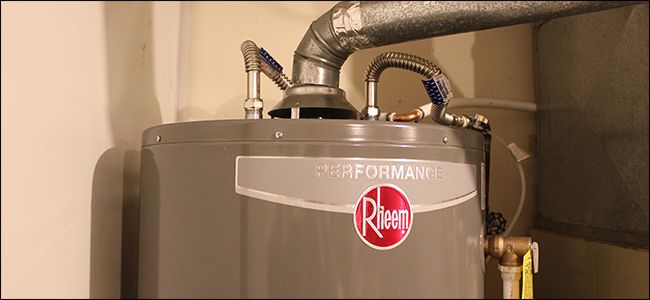Essential Care Strategies for Your Home's Hot Water System
Essential Care Strategies for Your Home's Hot Water System
Blog Article
The article following next pertaining to Tips on Maintaining a Water Heater is indeed enlightening. Read it yourself and see what you think of it.

Warm water is necessary for day-to-day comfort, whether it's for a rejuvenating shower or cleaning dishes. To ensure your hot water system runs efficiently and lasts much longer, normal upkeep is essential. This write-up offers functional tips and understandings on exactly how to preserve your home's hot water system to stay clear of disruptions and pricey repair services.
Intro
Maintaining your home's warm water system could appear overwhelming, however with a few straightforward steps, you can guarantee it operates efficiently for many years to come. This overview covers everything from recognizing your warm water system to DIY maintenance tips and knowing when to call expert aid.
Value of Preserving Your Warm Water System
Regular upkeep not only expands the life expectancy of your hot water system yet also ensures it runs efficiently. Ignoring upkeep can cause decreased performance, higher energy expenses, and also early failure of the system.
Indications Your Warm Water System Requirements Maintenance
Understanding when your hot water system needs attention can prevent major problems. Keep an eye out for signs such as irregular water temperature level, odd sounds from the heating unit, or rustic water.
Understanding Your Warm Water System
Before diving into maintenance jobs, it's handy to recognize the standard elements of your warm water system. Generally, this consists of the water heater itself, pipelines, anode rods, and temperature level controls.
Monthly Maintenance Tasks
Regular regular monthly checks can help catch small issues before they escalate.
Purging the Hot Water Heater
Purging your water heater eliminates debris build-up, boosting performance and prolonging its life.
Checking and Replacing Anode Rods
Anode poles prevent deterioration inside the tank. Checking and replacing them when broken is important.
Checking and Changing Temperature Level Setups
Readjusting the temperature level setups ensures ideal efficiency and safety and security.
Do It Yourself Tips for Maintenance
You can execute a number of maintenance jobs on your own to maintain your hot water system in top condition.
Looking for Leaks
Regularly evaluate pipes and connections for leaks, as these can cause water damages and higher expenses.
Evaluating Pressure Alleviation Valves
Examining the stress safety valve guarantees it operates appropriately and stops extreme pressure buildup.
Shielding Pipelines
Shielding hot water pipes lowers warmth loss and can conserve energy.
When to Call a Specialist
While do it yourself upkeep is helpful, some problems require specialist experience.
Facility Problems Needing Professional Aid
Examples consist of significant leaks, electric issues, or if your water heater is consistently underperforming.
Regular Expert Upkeep Perks
Professional upkeep can include extensive inspections, tune-ups, and making certain compliance with safety requirements.
Conclusion
Normal maintenance of your home's warm water system is necessary for efficiency, long life, and cost financial savings. By complying with these pointers and recognizing when to seek specialist help, you can make sure a reputable supply of warm water without unexpected disturbances.
How to Maintain an Instant Hot Water Heater
Before tinkering with your hot water heater, make sure that it’s not powered on. You also have to turn off the main circuit breaker and shut off the main gas line to prevent accidents. Also turn off the water valves connected to your unit to prevent water from flowing into and out of the appliance. 2. When you’re done, you have to detach the purge valves’ caps. These look like the letter “T†and are situated on either side of the water valves. Doing so will release any pressure that has accumulated inside the valves while at the same time avoid hot water from shooting out and burning your skin. 3. When the purge valves’ caps are removed, you have to connect your hosing lines to the valves. Your unit should have come with three hoses but if it didn’t, you can purchase these things from any hardware or home repair shops. You can also get them from retail stores that sell water heating systems. Read the user’s manual and follow it to complete this task properly. When the hosing lines are connected, open the purge port’s valves. 4. You should never use harsh chemical cleaners or solutions when cleaning your unit. Make use of white vinegar instead. It should be undiluted and you’ll probably use about 2 gallons. 5. Now flush your water heater. This task should probably take about 40 minutes. We can’t give you specific directions for this because the procedure is carried out depending on the type, model and brand of your heater. With that being said, refer to the user’s manual. 6. When you’re done draining the unit, you have to turn off the purge port valves again. Remove the hosing lines that you earlier installed on each of the water valves. Put the valve caps (purge port) back in their respective places and be very careful so as not to damage the rubber discs that are found inside these caps. 7. Now that everything’s back in place, check your user’s manual again to find out how to reactivate your water heating system. 8. Once it is working, turn one of your hot water faucets on just to let air pass through the heater’s water supply pipes. Leave the tap on until water flows smoothly out of it. https://www.orrplumbing.com/blog/2014/september/how-to-maintain-an-instant-hot-water-heater/

I have been very drawn to Water Heater Maintenance Tips You Can't Afford to Forget and I am assuming you liked our blog entry. In case you enjoyed reading our page please be sure to share it. Thanks a lot for taking the time to read it.
Start Now Report this page